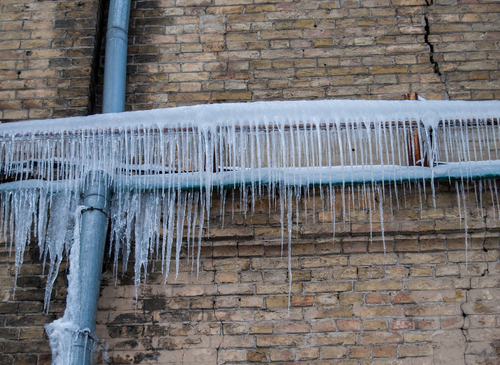Protecting Against Frozen Plumbing: Effective Strategies for Cold Weather
Protecting Against Frozen Plumbing: Effective Strategies for Cold Weather
Blog Article
Have you been searching for suggestions on 6 Ways to Prevent Frozen Pipes?

Cold weather can wreak havoc on your pipes, particularly by freezing pipelines. Here's how to prevent it from taking place and what to do if it does.
Introduction
As temperature levels decrease, the threat of icy pipelines increases, possibly causing costly repair work and water damages. Recognizing exactly how to stop frozen pipes is critical for property owners in chilly environments.
Avoidance Tips
Insulating prone pipelines
Wrap pipelines in insulation sleeves or utilize warm tape to secure them from freezing temperatures. Focus on pipelines in unheated or external areas of the home.
Home heating strategies
Maintain interior rooms adequately heated up, particularly areas with plumbing. Open closet doors to permit cozy air to circulate around pipes under sinks.
How to recognize frozen pipelines
Try to find lowered water circulation from taps, unusual smells or sounds from pipes, and noticeable frost on exposed pipelines.
Long-Term Solutions
Architectural modifications
Consider rerouting pipelines away from exterior walls or unheated areas. Include extra insulation to attic rooms, cellars, and crawl spaces.
Upgrading insulation
Purchase high-grade insulation for pipelines, attic rooms, and wall surfaces. Proper insulation helps keep consistent temperatures and minimizes the danger of icy pipelines.
Protecting Outside Plumbing
Garden pipes and outdoor taps
Separate and drain pipes garden hose pipes before winter months. Mount frost-proof faucets or cover outdoor faucets with protected caps.
Recognizing Icy Pipes
What causes pipelines to freeze?
Pipes ice up when exposed to temperatures below 32 ° F (0 ° C) for expanded durations. As water inside the pipelines freezes, it expands, taxing the pipe wall surfaces and possibly causing them to break.
Threats and damages
Icy pipes can lead to water interruptions, home damages, and costly repair work. Ruptured pipes can flooding homes and trigger extensive structural damages.
Indications of Frozen Pipeline
Identifying frozen pipelines early can prevent them from rupturing.
What to Do If Your Pipelines Freeze
Immediate actions to take
If you presume icy pipelines, keep taps available to relieve pressure as the ice melts. Make use of a hairdryer or towels taken in warm water to thaw pipelines slowly.
Final thought
Avoiding icy pipes needs positive measures and quick responses. By recognizing the reasons, indicators, and preventive measures, home owners can protect their pipes during cold weather.
6 Proven Ways to Prevent Frozen Pipes and Protect Your Home
Disconnect and Drain Garden Hoses
Before winter arrives, start by disconnecting your garden hoses and draining any remaining water. Close the shut-off valves that supply outdoor hose bibs and leave the outdoor faucet open to allow any residual water to drain. For extra protection, consider using faucet covers throughout the colder months. It’s also important to drain water from any sprinkler supply lines following the manufacturer’s directions.
Insulate Exposed Pipes
Insulating your pipes is an effective way to prevent freezing. Pipe insulation is readily available at home improvement stores and is relatively inexpensive. Pay close attention to pipes in unheated areas such as the attic, basement, crawl spaces, or garage. Apply foam insulation generously to create a buffer against the cold. You can also wrap your pipes in heat tape or thermostat-controlled heat cables for added warmth.
Seal Air Leaks
Inspect your home for any cracks or openings that could let in cold air. Seal any holes around the piping in interior or exterior walls, as well as the sill plates where your home rests on its foundation. Additionally, make sure to keep your garage door closed unless you’re entering or exiting. Leaving it open creates a significant air leak that can lead to frozen pipes.
Allow Warm Air Circulation
During cold snaps, it’s essential to allow warm air to circulate evenly throughout your home. Leave interior doors ajar to promote better airflow. Open kitchen and bathroom cabinets to help distribute heat consistently around the rooms. If you have small children or pets, be sure to remove any household chemicals or potentially harmful cleaners from open cabinets for safety.
Let Faucets Drip
A small trickle of water can make a big difference in preventing ice formation inside your pipes. When temperatures drop significantly, start a drip of water from all faucets served by exposed pipes. This continuous flow helps prevent the water from freezing. Additionally, running a few faucets slightly can relieve pressure inside the pipes, reducing the chances of a rupture if the water inside does freeze.
https://choateshvac.com/6-proven-ways-to-prevent-frozen-pipes-and-protect-your-home/

Do you appreciate reading up on Winter Plumbing Precautions: Preventing Frozen Pipes? Create a short review down the page. We will be delighted to find out your opinion about this page. In hopes that you come back again later on. For those who appreciated our blog post kindly consider to pass it around. Thanks a lot for your time. Please pay a visit to our blog back soon.
Detail Report this page